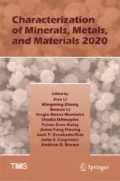Abstract
Artifacts from FIB milling can be of great concern. Aside from commonly known defects (e.g., Ga ion implantation, re-deposition, microstructure change due to specimen temperature increase, surface amorphization, etc.), FIB milling can even result in phase transformation in some metal alloys. Limited study has shown normal incident Ga ion beam milling which can transform austenite (FCC ) to BCC structure in some stainless steels . This can be detrimental when austenite in stainless steels needs to be analyzed. However, one important question to answer is if milling in high glancing angle can result in such transformation. The susceptibility of austenite transformation to BCC structure is studied using EBSD on commercial stainless steels . When irradiated by normal incidence Ga ion beam, even with low dose, surface of SS304 and SS316 was transformed from austenite to BCC structure. However, irradiation from high glancing angle does not result in such transformation of relatively unstable austenite structure in SS304.
Access this chapter
Tax calculation will be finalised at checkout
Purchases are for personal use only
References
Li J (2011) Advanced techniques in TEM specimen preparation. In: Maaz K (ed) The transmission electron microscope. ISBN: 979-953-307-311-7
Phaneuf MW, Li J, Shuman RF, Noll K, Casey JD (2003) Apparatus and method for reducing differential sputter rates, US patent #6,641,705. Issued 04 Nov 2003
Knipling KE, Rowenhorst DJ, Fonda RW, Spanos G (2010) Effects of focused ion beam milling on austenite stability in ferrous alloys. Mater Charact 61:1–6
Basa A, Thaulow C, Barnoush A (2014) Chemically induced phase transformation in austenite by focused ion beam. Metall Mater Trans A 3:1189–1198
Eichelman GH, Hull FC (1953) Trans Am Soc Met 45:77
McGuire MF Stainless steels for design engineers. ASM International. ISBN: 978-0-87170-717-8
Kolman DG, Bingert JF, Field RD (2004) Metall Mater Trans A 35:3445–3454
Casey JD et al (2002) Advanced sub 0.13 µm Cu devices—failure analysis and circuit edit with improved FIB chemical processes and beam characteristics. In: Proceedings of international symposium for testing and failure analysis, pp 553–557
Author information
Authors and Affiliations
Corresponding author
Editor information
Editors and Affiliations
Rights and permissions
Copyright information
© 2020 The Minerals, Metals & Materials Society
About this paper
Cite this paper
Li, J., Liu, P. (2020). Austenite Stability Under Focused Ion Beam Milling. In: Li, J., et al. Characterization of Minerals, Metals, and Materials 2020. The Minerals, Metals & Materials Series. Springer, Cham. https://doi.org/10.1007/978-3-030-36628-5_8
Download citation
DOI: https://doi.org/10.1007/978-3-030-36628-5_8
Published:
Publisher Name: Springer, Cham
Print ISBN: 978-3-030-36627-8
Online ISBN: 978-3-030-36628-5
eBook Packages: Chemistry and Materials ScienceChemistry and Material Science (R0)

